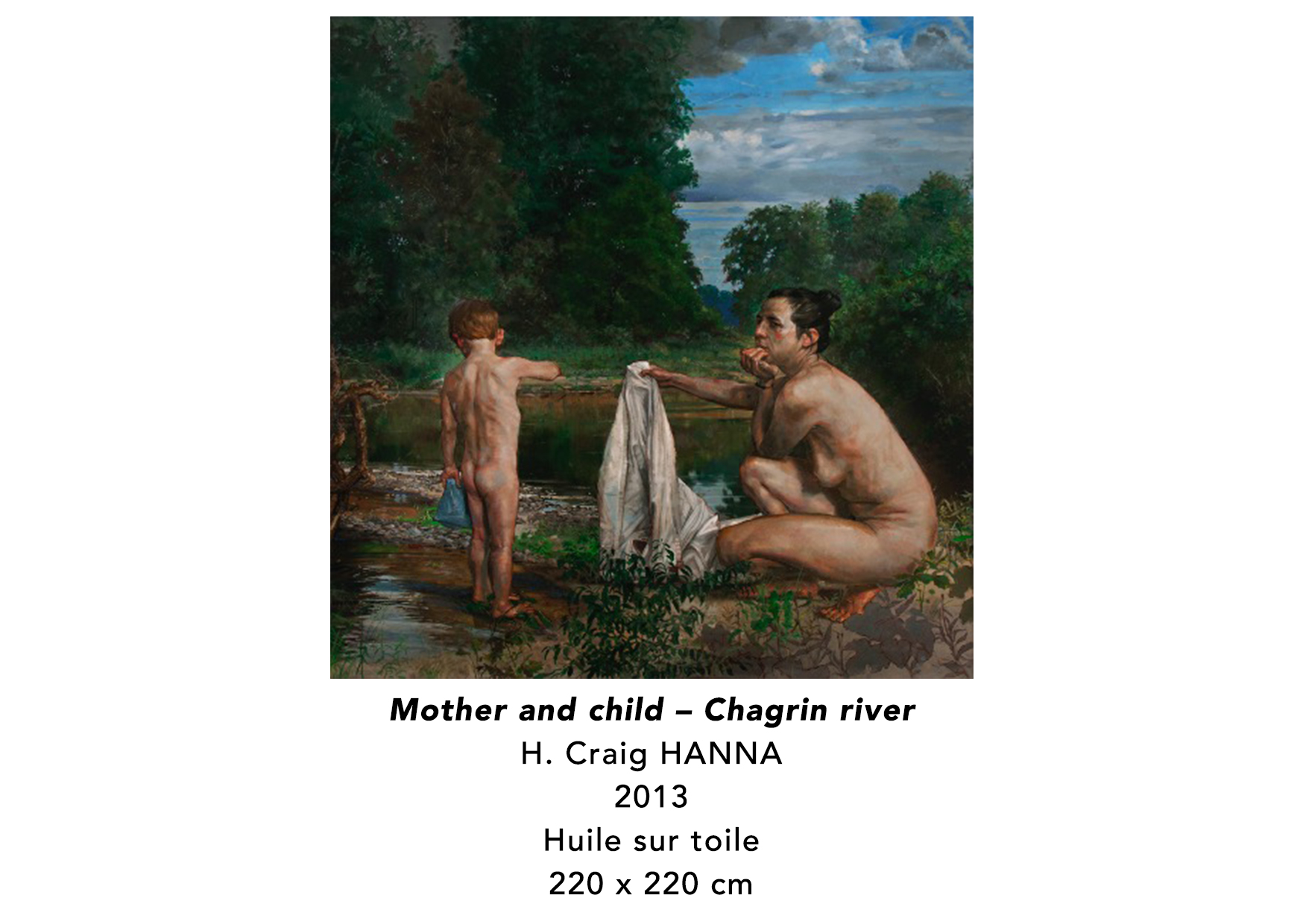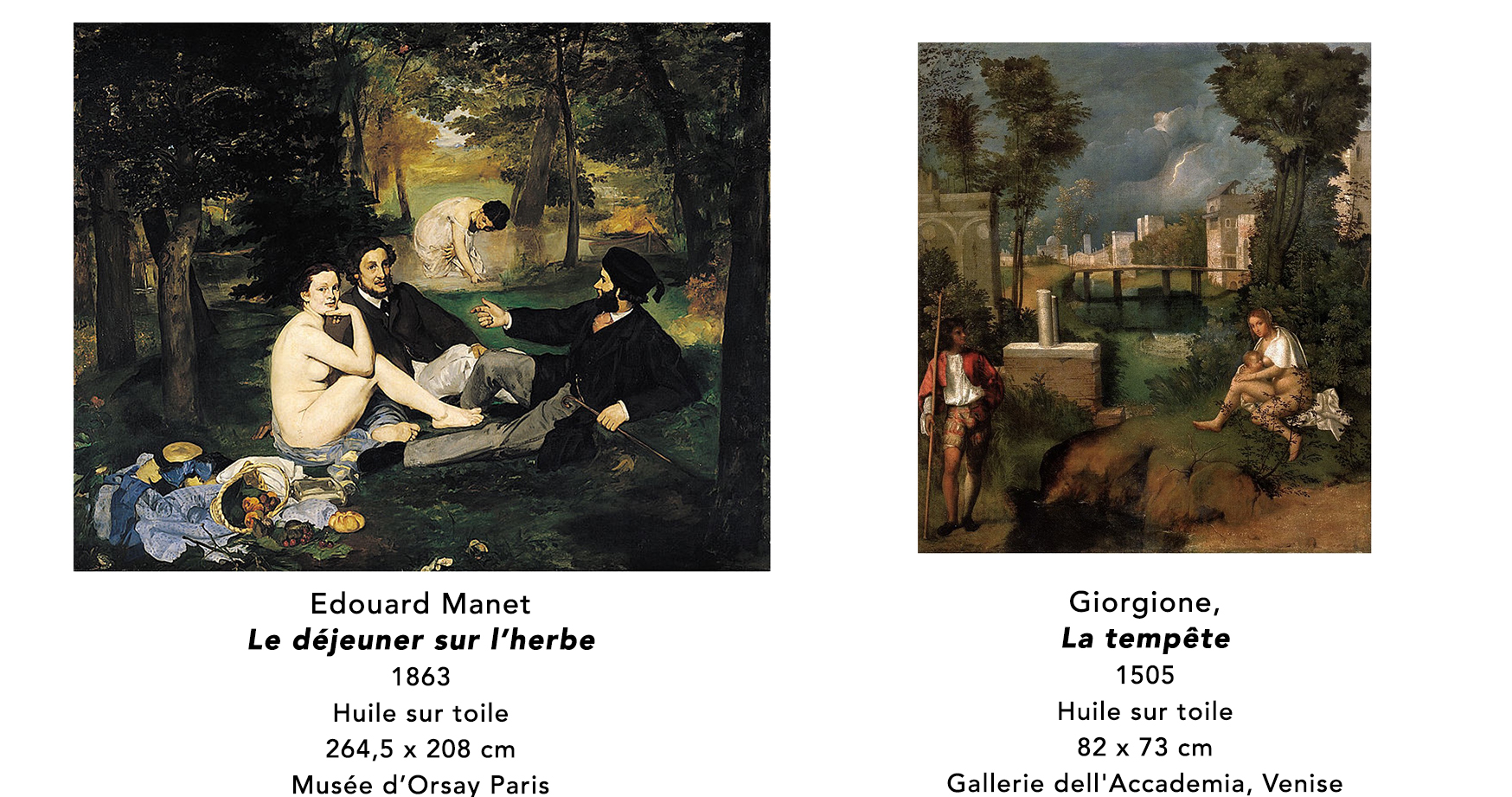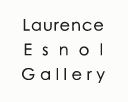Commentaire d’œuvre 4 > Mother and child, H. Craig HANNA


Voilà sans conteste une des créations majeures d’H. Craig HANNA.
Contrairement à d’autres œuvres de l’artiste, conçues principalement sur plexiglas, cette œuvre, de format carré et imposant, est bien une huile sur toile. Encadrée de noir, elle a la dimension de ces œuvres qui jadis, ne pouvaient être qu’historiques.
Plongés dans une nature aussi réaliste qu’enchanteresse, deux protagonistes prennent place, différemment, dans cet espace. Cette nature, c’est celle de l’enfance du peintre et ces deux êtres, son fils et son épouse. Tandis que l’enfant nous tourne le dos et reste debout, le bras droit esquissant un geste que nous ne pouvons deviner, la femme accroupie tend un linge au milieu de la scène. Son regard semble lointain et sa main supporte son visage. Le tout, pensé scrupuleusement, forme une composition tripartite : le ciel, l’eau et la terre répondent aux trois actes de variations des corps et du drapé.
Les purs contrastes des tons sombres de la nature avec les tons clairs de la chair et du ciel inscrivent la toile dans la lignée reconnaissable des artistes modernes tels qu’Edouard Manet ou Gustave Courbet. Ces contrastes créent une impression vive et saisissante de vrai, et ici, sans trivialité, traduisent l’esthétique du geste, du sculptural et du motif comme sujet.
Car ce n’est pas tant sa famille que le peintre représente, qu’un motif prêt à révéler tout le virtuose de sa technique. Sans cela, pourquoi cette scène ? La même ambiguïté charmante que celle de La tempête de Giorgione, transparait dans cette œuvre et le non finito des herbes du coin inférieur droit laisse ouverte la porte de l’imaginaire et de l’interprétation : pure mise en scène ou scène de rêve ? En ces interrogations demeure toute la force d’une grande toile.
This is without a doubt one of the major creations of H. Craig HANNA.
Unlike other works by the artist, designed mainly on plexiglass, this work, square and imposing, is indeed an oil on canvas.
Framed in black, it has the dimension of those works that once could only be historical.
Immersed in a nature as realistic as it is enchanting, two protagonists take their place, differently, in this space. This nature is the painter’s childhood one and these two people, his son and his wife. As the child turns his back to us and remains standing, his right arm making a gesture that we cannot guess, the crouching woman holds out a cloth in the middle of the stage. Her gaze seems distant and her hand supports her face. Everything, carefully thought out, forms a tripartite composition : the sky, the water and the earth respond to the three acts of variations of the body and the drape.
The pure contrasts of the dark tones of nature with the light tones of the flesh and the sky inscribe the canvas in the recognizable lineage of modern artists such as Edouard Manet or Gustave Courbet. These contrasts create a vivid and striking impression of truth, and here, without triviality, translate the aesthetics of gesture, sculpture and motif as subject.
It is not so much his family that the painter represents, but a motif ready to reveal all the virtuoso of his technique. Without that, why this scene ? The same charming ambiguity as the one of The Tempest by Giorgione, shines through in this work and the non finito of the herbs in the lower right corner leaves open the door to the imagination and to the interpretation : pure staging or dream scene ? In these questions remains all the strength of a great canvas.
